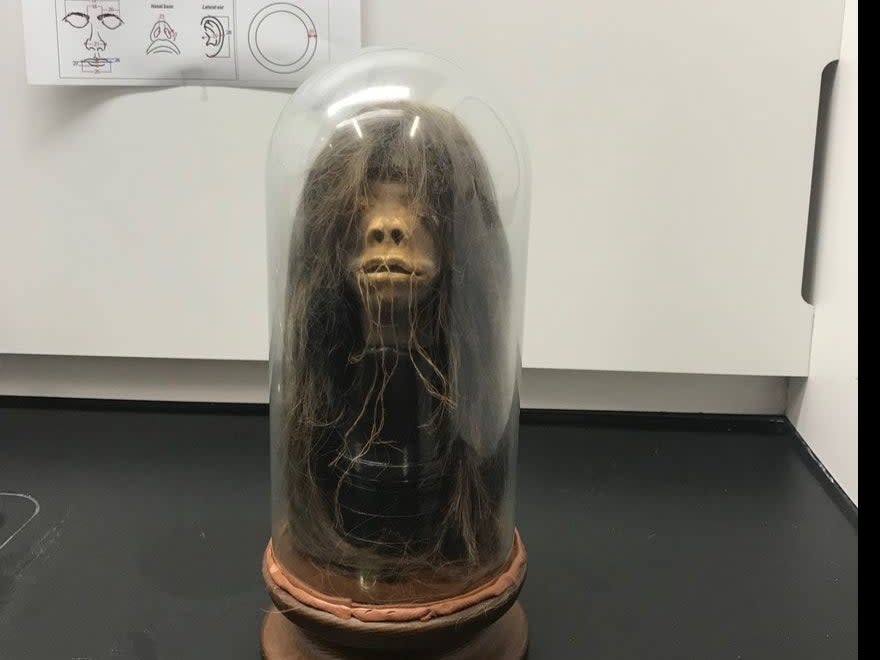Prop ‘Amazon chief’ shrunken head at Georgia university revealed to be real human head

A shrunken head used as a prop in the 1979 John Huston film Wise Blood has been authenticated as a real human head after being on display at a university in Georgia for decades.
It will now be returned to Ecuador, its country of origin. The head, called “tsantsa” in Amazonian languages, came to be in the university’s possession after a former faculty member got it while serving in the military.
The now-deceased biologist Jim Harrison came across the artefact while travelling in Equador in 1942, according to a research paper. The tsantsa became a part of the university’s collection after Dr Harrison died in 2016.
Tsantsas were at first a ceremonial item used during social events, but they started holding monetary value when they became “keepsakes and curios” during the 1800s because of Western intrusion, the paper states. It adds that the heads “were made from human remains by certain indigenous culture groups of Ecuador and Peru”.
Shrunken heads were made using a labour intensive process of removing the skull and flesh, sewing shut the eyes and mouth, boiling it, and filling it with hot sand and stones.
Mercer University repatriated the head to the Ecuadorian consulate in Atlanta in 2019 but it’s unclear if has yet returned to Ecuador.
Mercer University chemist Adam Kiefer told NBC News: “This is not an oddity, this is somebody’s body, this is somebody’s culture, and it’s not ours. So from our perspective, repatriation was essential, and we were very lucky that our university supported this endeavour.”
Many fakes were made to meet the rising demand of tsantsas which is why Mercer University faculty went to great lengths to establish the authenticity of the artefact in their possession. They spent years performing tests on the shrunken head, such as CT scans and reconstructing a three-dimensional model of the head.
Dr Harrison wrote in a memoir that he traded with locals to get the shrunken head.
“It was Indiana Jones,” Dr Kiefer told NBC News. “When this was collected, science was different, everything was new... but almost 80 years later, we recognize its cultural importance, along with the science.”
Mercer University biology professor Craig Byron told The Art Newspaper that it was “a relief to have the specimen out of our possession”.
He added: “It had ‘underground’ value, it was illegal to trade or sell, it was the skin from a person’s head, we had no business holding on to this item. It was a rewarding conclusion to a project hanging around since 2015.”
It’s believed that the tradition of making tsantsas started as a way to get past blood feuds among Amazonian peoples. The intention appears to have been to capture the spirit of a killed warrior in order for the tsantsa’s supernatural power to be given to the community of the winner of a battle.
The tests of the Mercer tsantsa resulted in the artefact passing 30 of the 32 criteria for authentication.
In Wise Blood, the head was glued to a small body prop and worshipped by one of the film’s characters. Members of the faculty said they found damage done from the glue on the artefact. The film was adapted from a novel by author Flannery O'Connor, who lived near Macon, Georgia, where Mercer University is located.
Read More

